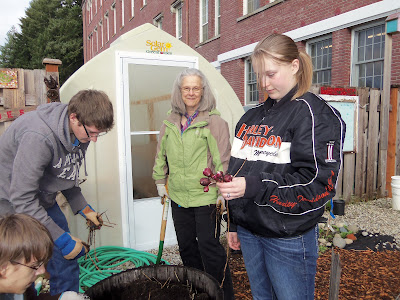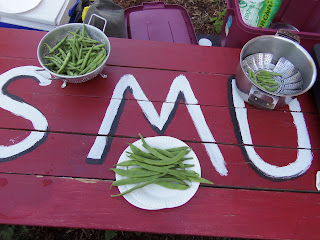The primary reasons for remineralization of the soil with the addition of powdered rock, called rock dusts, is to provide a slow natural release of trace minerals which are then available to the growing plants. Trace minerals are essential for optimum health in both plants and animals. Soils that have had rock dust applied produce plants that are healthier and more nutritious and equally as important more flavorful. Rock dusts affect the soil in numerous ways increasing earthworm and microbial activity and balancing the Ph. The addition of rock dusts to the soil increases the plants resistance to insects, disease, frost and drought and decreases their dependence on chemical fertilizers, pesticides and herbicides. These powdered rocks work to improve the texture of the soil.
Our Pacific Northwest soils in the Olympia area receive an average of 50.79 inches of rain a year. Because of this we have to replenish our soils to keep them productive. We have to offset what is leached out due to the rain. Here are the rock dusts I like to apply and replenish every four or five years.
Limestone is a sedimentary rock made up primarily of the minerals calcite and aragonite. It makes up about ten percent of all sedimentary rock. Limestone is comprised primarily of the shells of marine animals long since extinct. It is crushed to a fine powder and added to gardens to sweeten acidic soils. Anything below a Ph of 7 is acidic anything above 7 is considered alkaline, most plants do well with a Ph of about 6 to 7.5. Dolomite is a term used to describe a sedimentary carbonate mineral referred to as dolostone. This is also used to sweeten garden soils and to add calcium and magnesium.
Greensand is a sedimentary rock that contains glauconite a mineral that adds potassium to the soil. Greensand is formed in an anoxic marine environment. It is found in coastal and estuarine environments and made of ocean sediments, creatures as well as plants. The success of 20th and 21st century agriculture is owed in great part, to the discovery of, and the ability to mine and transport these ores on a grand scale.
Rock Phosphate or Phosphorite is a sedimentary rock that is mined to add to organic fertilizer but is also used in the manufacture of synthetic fertilizers to boost their effectiveness. Our planetary deposits of Phosphorite have been mined extensively and are disappearing. There are other ways to obtain Phosphorous but they are energy intensive, very expensive, and under-researched. In the United States phosphorite has been mined in Florida, Tennessee, Wyoming, Idaho, Utah and Kansas. The Phosphate is present in the phosphorite as flourapatite. Crushed rock phosphate is used to add phosphorus to the soil.
Glacial Rock Dust is composed primarily of ground feldspar and quartz. A natural glacial rock dust referred to as rock flour is created by the mechanical grinding of bedrock by glacial erosion this can be seen flowing into high mountain rivers and lakes around the world. In lieu of waiting for the glacier, Glacial rock dust can be made by milling or grinding quartz and feldspar this is another way to add essential trace minerals to garden soils.
Azomite is volcanic in origin is said to contain 67 trace elements and to be and all around plant booster.
Fertilizers have an NPK rating:
v N stands for nitrogen. Nitrogen is essential for leaf and stem growth. Low nitrogen means small plants.
v P stands for phosphorus. Phosphorous promotes root and shoot development. Poor roots, sick plant.
v K stands for potassium. Potassium is used by the plant to produce flowers and fruit. It improves overall plant health.
Nitrogen is put back into the soil via animal manures (cloven or feathered usually) green manures or by adding high protein meals like soy. The Phosphorous and Potassium are put into, or back into the soil via rock dusts. So there you have your NPK. If your plants get enough water and sunshine you should have a lovely garden.

















.JPG)





























